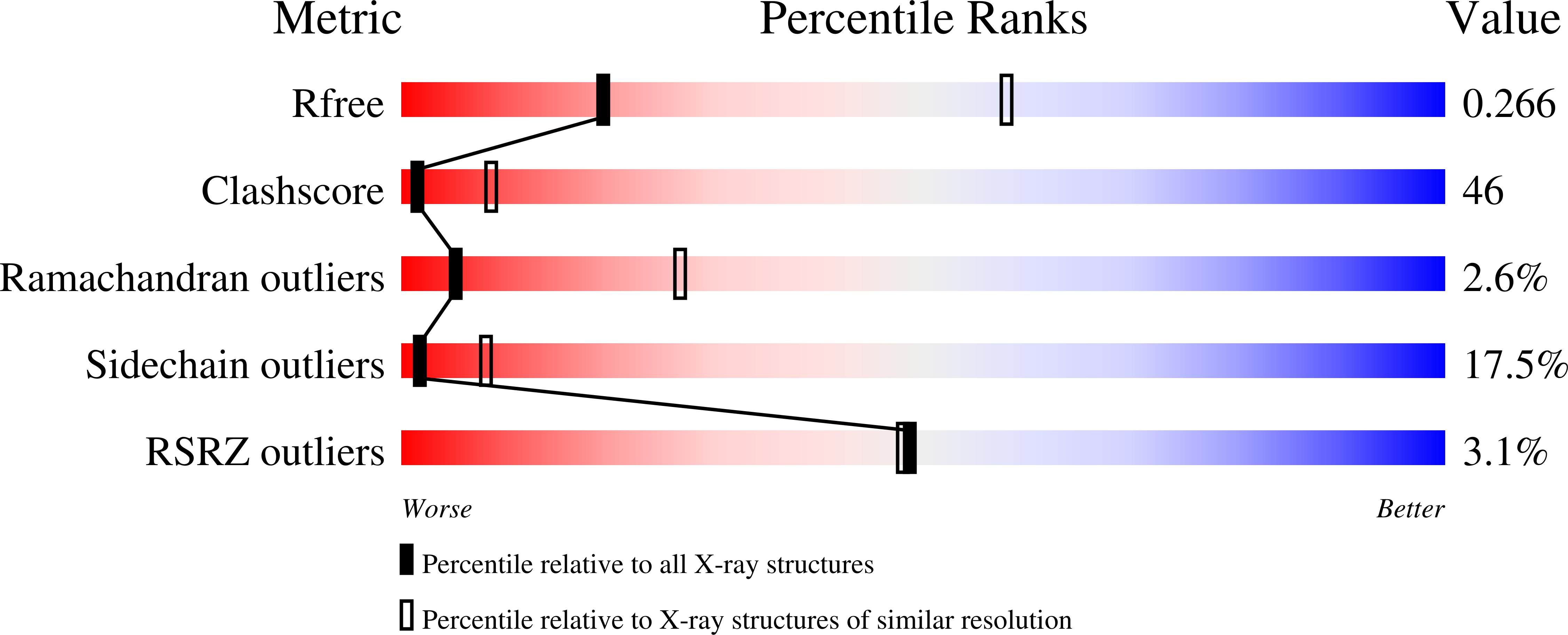The structure of the fusion glycoprotein of Newcastle disease virus suggests a novel paradigm for the molecular mechanism of membrane fusion.
Chen, L., Gorman, J.J., McKimm-Breschkin, J., Lawrence, L.J., Tulloch, P.A., Smith, B.J., Colman, P.M., Lawrence, M.C.(2001) Structure 9: 255-266
- PubMed: 11286892
- DOI: https://doi.org/10.1016/s0969-2126(01)00581-0
- Primary Citation of Related Structures:
1G5G - PubMed Abstract:
Membrane fusion within the Paramyxoviridae family of viruses is mediated by a surface glycoprotein termed the "F", or fusion, protein. Membrane fusion is assumed to involve a series of structural transitions of F from a metastable (prefusion) state to a highly stable (postfusion) state. No detail is available at the atomic level regarding the metastable form of these proteins or regarding the transitions accompanying fusion. The three-dimensional structure of the fusion protein of Newcastle disease virus (NDV-F) has been determined. The trimeric NDV-F molecule is organized into head, neck, and stalk regions. The head is comprised of a highly twisted beta domain and an additional immunoglobulin-like beta domain. The neck is formed by the C-terminal extension of the heptad repeat region HR-A, capped by a four-helical bundle. The C terminus of HR-A is encased by a further helix HR-C and a 4-stranded beta sheet. The stalk is formed by the remaining visible portion of HR-A and by polypeptide immediately N-terminal to the C-terminal heptad repeat region HR-B. An axial channel extends through the head and neck and is fenestrated by three large radial channels located approximately at the head-neck interface. We propose that prior to fusion activation, the hydrophobic fusion peptides in NDV-F are sequestered within the radial channels within the head, with the central HR-A coiled coil being only partly formed. Fusion activation then involves, inter alia, the assembly of a complete HR-A coiled coil, with the fusion peptides and transmembrane anchors being brought into close proximity. The structure of NDV-F is fundamentally different than that of influenza virus hemagglutinin, in that the central coiled coil is in the opposite orientation with respect to the viral membrane.
Organizational Affiliation:
Biomolecular Research Institute, Parkville, Victoria 3052, Australia.




















